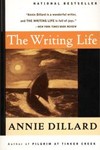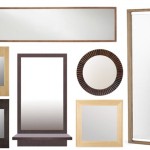 If you’re a writer, a reader, here’s what I’ve been reading for my own private MFA, year 1, with commentary. The books don’t make a lot of sense together, except that the list means that I have read for myself this year more than I have in a long time. And maybe that’s an accomplishment, in itself.
If you’re a writer, a reader, here’s what I’ve been reading for my own private MFA, year 1, with commentary. The books don’t make a lot of sense together, except that the list means that I have read for myself this year more than I have in a long time. And maybe that’s an accomplishment, in itself.
Nonfiction
I think it’s safe to say that I’ve read more nonfiction in this last year than I usually do. Novels are the bread-and-butter of my reading diet, or if you’re me, the rice. Nonfiction was a category I rarely touched, a whole section of the library that I rarely visited until graduate school, where literary theory, ethnic studies, and food studies (and food literature) really entered the menu. It’s still not the first section of the bookstore that I’ll visit, but I no longer avoid it like the plague.
- The Brief Immortal Life of Henrietta Lacks*, Rebecca Skloot. An amazing feat of science writing, journalistic reporting, memoir that travels fluently between several time periods. If you haven’t read it yet, pick it up; you’ll probably be shocked at what you probably didn’t know. It took Skloot something like 10 years to research and write the book, and I can see why. Side literary note: she cited Fannie Flagg’s novel Fried Green Tomatoes as an influence for her own book’s structure.
- Switch: How to Change Things When Change Is Hard. Chip and Dan Heath. I thought I’d be reading this book as a career changer, and in some respects it’s been useful. But I found their lessons highly memorable and applicable in settings from teaching freshman composition to political change and policy creation. Perhaps a bit too business-oriented for me?–but an entertaining and provocative read.
- One Person/Multiple Careers, Marci Alboher. Another useful read for career changers. Some useful suggestions and inspiring examples, but not as memorable as the Heaths’ book.
- My Reading Life, Pat Conroy. As a novelist, Conroy has hit some of the same notes far too often for me, but his appreciation of food and his zest for storytelling can draw me back in spite of myself. This memoir is Conroy’s set of love letters to some of his most influential books, and as a fellow lifelong passionate reader it’s fun to see how he approaches each book or author with reverence or nostalgia or hero-worship.
- The Gifts of Imperfection, Brené Brown. I really love this author’s speeches on TEDtalks. For those who are drawn to her material there–with all due respect, because I really do think her work is valuable–I’d suggest sticking to the talks. Part memoir, part advice–this book felt to me like the PowerPoint slides without as much of the author’s engaging and compelling presence.
- The Creative Habit, Twyla Tharp. I liked this book more as a memoir than as a writing/creative advice manual, but I think I am not quite her audience. I don’t think I need to be convinced to be creative, or that creativity is valuable and part of everyday life. But, I appreciate her willingness to include so many people and activities as “creative.”
- On Writing, Stephen King.* This book surprised me in so many good ways. Because I don’t really like the genres that King uses typically (horror, noir), I don’t read his work very often. But this book reminded me that he is a master storyteller, and some of the memoir sections told me about why he writes in the genres that he does. I found myself wanting to keep my library copy; it’s a book that I could see myself returning to over and over again. A great precursor to Victor LaValle’s work (more on that in a minute).
- The Writing Life, Annie Dillard. A lovely set of meditations on the writing life–not really Dillard’s life, necessarily–but a set of gentle suggestions or mantras about how to approach life as a writer and working artist. One of my favorite moments in the book involves seclusion and fireworks.
Fiction
As always, so many good books, so little time. I don’t think this list is complete, but it’s a good sampling of what I read this year (except for the books that I like to reread). Sometimes I become too ambitious and order a whole slew of books at once from the library and can’t read them all in time. I’ll tell you this, though: my 50-page rule still holds. (If the author doesn’t have me by page 50, I will usually not finish the book. See the first sentence of this paragraph.)
- Honoring Juanita, Hans Ostrom. My good friend and colleague wrote this historical novel, cheap ventolin online based on events in the Sierra Nevada. Sometimes it’s hard to shake the author’s presence from fiction when you know the author, but Mary Bluestone’s voice is engaging and the novel’s exploration of the aftermath of historical figures made me think quite a bit.
- The Atlas of Love, Laurie Frankel. Another colleague wrote this lovely book about “atypical” forms of family, friendships, and love. Readers who have gone to graduate school in the humanities will especially appreciate this warmhearted book and its engaging narrator, Janey.
- Big Machine, Victor LaValle. One of the craziest books I’ve read in a while, but I want so many more people to read it. Both page-turning and experimental: a huge accomplishment in itself. Stephen King (horror) crossed with Ralph Ellison (modernist experiments with race) and Haruki Murakami (magical realism) and James Weldon Johnson (deep knowledge of racial politics). And set partly in the Bay Area, home of my homes. I kept thinking, “No, you can’t do that! or go there”–and he kept doing it. Go read it, please, so we can talk about it together.
- Great House, Nicole Krauss. Krauss has gorgeous prose. I found myself writing down bits of wisdom from the book, short lines and quotations. But I never quite felt that this novel came together as I felt it should. Four narrators/narratives, all centered around a single object: a writer’s desk (think The Red Violin in novel form).
- Pictures of You, Caroline Leavitt. After I became pregnant with my first daughter, it was hard to read anything where bad things happened to children. (Exponentially so now that both of my daughters are here.) Thus, Leavitt’s novel was an emotional test for me: can I read a novel where bad things happen to children, and the bad thing is the death of a parent? Yes, I can, but not without difficulty. More about this in a later post.
- Under Heaven, Guy Gavriel Kay. Outing myself as a fantasy/historical fantasy reader, since junior high school. I don’t read very much of it anymore but Kay, I think, is one of the very best. He rarely sacrifices character development for plot, when so many in this genre seem to do the reverse. This novel’s set in China, around the time of the Tang dynasty, involving an impossible and terribly consequential gift.
- Before You Suffocate Your Own Fool Self, Danielle Evans. I had to take this book back to the library because I wasn’t quite in the mood for it (read: it made me sad), but I admired Evans’s craft. I’d like to revisit the collection someday.
- A Thread Of Sky, Deanna Fei. Some important (and highly readable) work here if you are interested in transnational relationships between Asia and America and immigrants. Five main characters, all with large and looming issues, made this novel at times overly ambitious, but it provides an important crash course in a number of Asian American issues.
- Take Me Home, Brian Leung. I was excited to read Leung’s historical novel set in Wyoming in the 19th century, about Chinese immigrants and the Rock Springs massacre. Not many have ventured into historical fictional territory (ha) with this incident, if any. I am hoping my scholarly friends in Asian American Studies and American Literature will pick this one up.
- Skippy Dies, Paul Murray. Amazing prose, well-drawn characters, hilarious at points–and yet, as with a number of postmodern pyrotechnics, the ending did not satisfy me.
- The Calligrapher’s Daughter, Eugenia Kim. A staggering feat of feminist historical fiction, especially given Kim’s audience and what we would probably (not) know about twentieth-century Korean history and the Japanese occupation. I was awed. I loved the narrator and the narrator’s mother, and I wanted to know what would happen to them both.
- A Tree Grows in Brooklyn, Betty Smith. This book is a classic, I know, but I did not read it until this year. It was startlingly honest about maternal love, about tenement poverty, about adultery and about female adolescence. You probably wouldn’t get away with publishing this book as a “coming of age” Young Adult novel today, and yet in so many ways that’s exactly what it is, the prototype for the female bildungsroman all the way up to The House on Mango Street and beyond. I am still thinking through this book’s honesty.
I had a number of “books I like to reread,” but I’ll save that for another post, another time. I am working on Abraham Verghese’s novel Cutting for Stone, and I just picked up The Tragedy of Arthur. Have a good weekend. I hope you’re able to enjoy some reading time.

